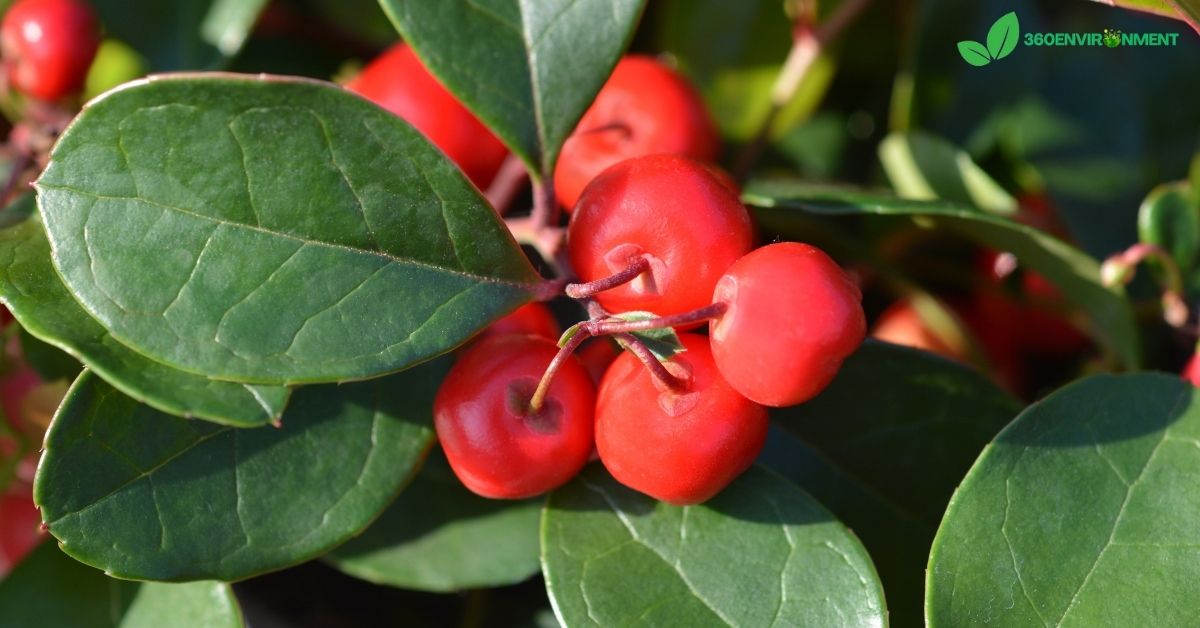Introduction
Wintergreen, a low-growing perennial plant, has long been admired for its distinctive minty scent and flavor. Found in various regions across North America, including the vast and diverse landscapes of Alaska, wintergreen has played an important role in traditional medicine and the diet of Indigenous peoples. In Alaska, wintergreen is commonly found in forests, meadows, and moist, shaded areas, thriving in the cold climate that characterizes much of the region.
This article seeks to answer the question, “Is the wintergreen found in Alaska edible?” by exploring the plant’s identification, edibility, potential uses, and ecological significance in Alaska’s unique environment. Through an examination of its nutritional value, medicinal properties, and impact on local biodiversity, this article aims to provide a comprehensive understanding of wintergreen and its place in Alaskan ecosystems.
1. Understanding Wintergreen: Botany and Identification
Before diving into the question of “Is the wintergreen found in Alaska edible” it’s essential to understand what wintergreen is and how to identify it accurately. In Alaska, wintergreen refers to a few different species that belong to the genus Gaultheria, most notably Gaultheria procumbens (Eastern wintergreen) and Gaultheria hispidula (Creeping snowberry).
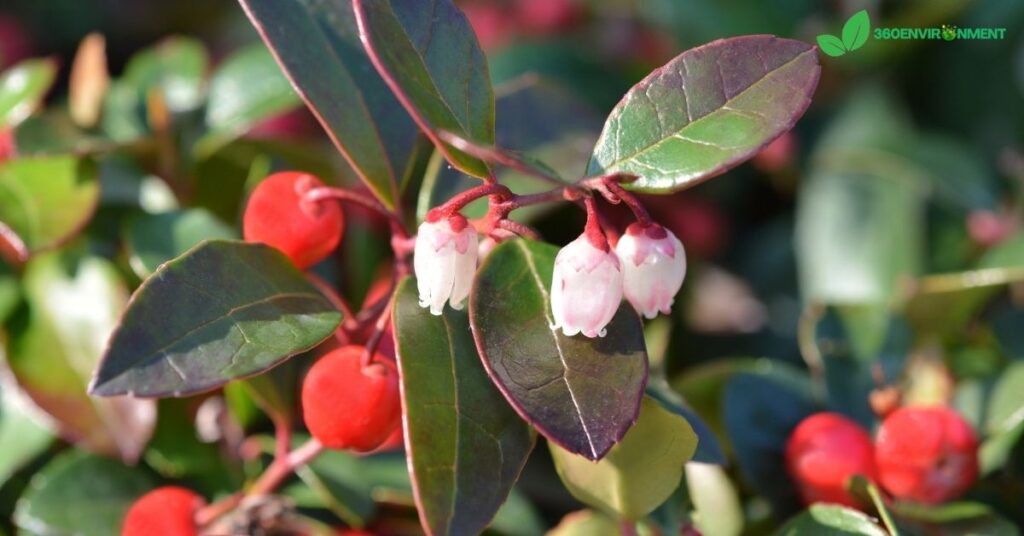
1.1. Key Characteristics of Wintergreen
Wintergreen is a member of the Ericaceae family (heath family), which includes many other well-known plants like blueberries and cranberries. The following characteristics are typical of wintergreen species found in Alaska:
- Leaves: Wintergreen plants have small, glossy, dark green leaves that emit a strong minty scent when crushed. The leaves are evergreen, meaning they remain on the plant throughout the year.
- Flowers and Berries: The plant produces small white or pinkish bell-shaped flowers, which later develop into bright red berries. These berries are a key identifying feature and play a role in the plant’s ecological interactions.
- Growth Habit: Wintergreen is a low-growing plant that spreads across the forest floor or other shaded areas through a network of underground stems (rhizomes). This makes it an excellent ground cover in forested environments.
1.2. Differentiating Species of Wintergreen in Alaska
In Alaska, there are two prominent species of wintergreen: Gaultheria hispidula and Gaultheria procumbens. While similar in many respects, they can be distinguished by their growth habits and habitats.
- Creeping Snowberry (Gaultheria hispidula): This species is more common in northern areas of Alaska. It has tiny white berries and delicate, creeping stems that form a carpet-like growth in mossy and forested areas. The berries and leaves emit a wintergreen aroma, though the flavor is milder than its southern counterpart.
- Eastern Wintergreen (Gaultheria procumbens): Although less common in Alaska, this species is more recognizable by its larger, shiny leaves and bright red berries. The plant’s leaves are more robust, and its berries have a strong wintergreen flavor, often more intense than that of G. hispidula.
2. Is the Wintergreen Found in Alaska Edible?
The short answer is yes—wintergreen plants, particularly the berries and leaves, are edible. However, it’s essential to understand their culinary and medicinal uses, as well as potential risks associated with consumption, to make the most of their benefits.
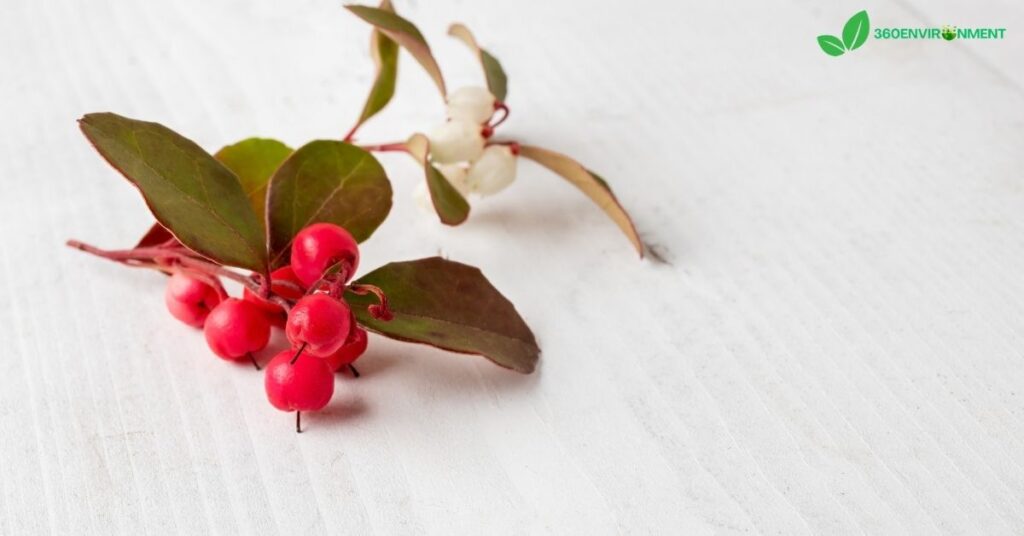
2.1. Edibility of Wintergreen Berries
while answering the question “Is the wintergreen found in Alaska edible” Let us tell you about the berries produced by both Gaultheria procumbens and Gaultheria hispidula are edible. The flavor is often described as mildly sweet and minty, with G. procumbens having a more robust taste.
- Creeping Snowberry Berries: The small white berries of G. hispidula are edible and have a subtle, refreshing flavor with a hint of wintergreen. Although they can be consumed raw, they are often enjoyed in small quantities due to their delicate taste.
- Eastern Wintergreen Berries: The bright red berries of G. procumbens are more commonly eaten and used in various culinary applications. Their strong minty flavor makes them a popular choice for making wintergreen-flavored teas, jams, and syrups. However, the berries can be somewhat dry and mealy, so they are often combined with other ingredients to enhance their texture and flavor.
2.2. Edibility of Wintergreen Leaves
Wintergreen leaves are also edible, though they are more commonly used for medicinal or flavoring purposes rather than eaten raw.
- Infusions and Teas: The most common use of wintergreen leaves is in making teas. When brewed, the leaves release methyl salicylate, the compound responsible for the plant’s minty flavor and fragrance. Wintergreen tea has long been used for its medicinal properties, particularly as a remedy for headaches, sore muscles, and cold symptoms.
- Flavoring Agents: Wintergreen leaves can be used to flavor foods and beverages, much like mint or spearmint leaves. In Alaska, traditional preparations may include using wintergreen leaves to add a minty note to dishes like berry preserves, sauces, or wild game preparations.
3. Nutritional and Medicinal Benefits of Wintergreen
Wintergreen is more than just a flavorful wild plant; it also offers various nutritional and medicinal benefits. These attributes make it a valuable resource for those who live close to nature, particularly in regions like Alaska, where wild edibles play an important role in the diet and health of Indigenous peoples.
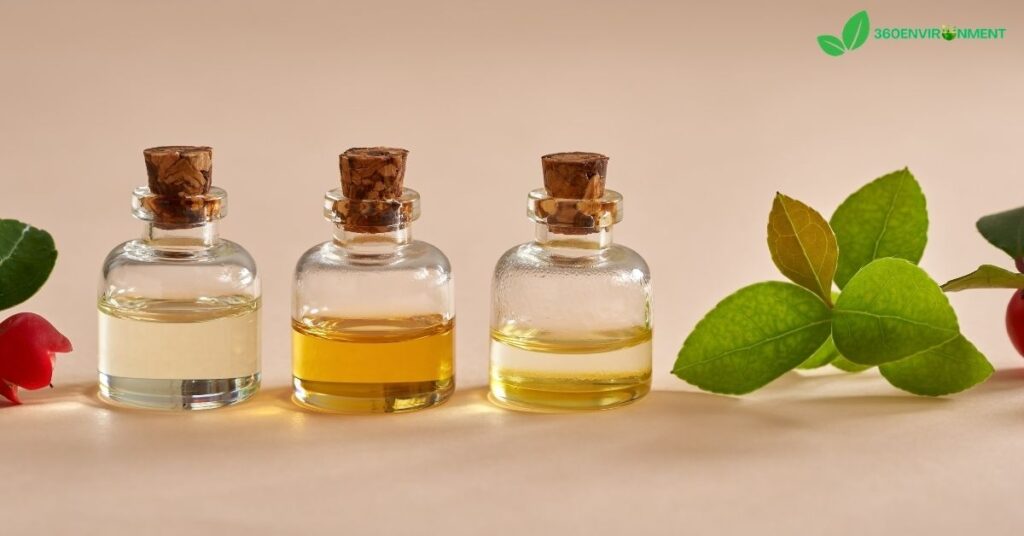
3.1. Nutritional Value
While wintergreen berries and leaves are not consumed in large quantities, they do offer certain nutritional benefits.
- Antioxidants: The bright red and white berries of wintergreen plants contain antioxidants that help protect cells from oxidative damage. Antioxidants play a vital role in maintaining overall health and preventing chronic diseases.
- Vitamins and Minerals: Wintergreen berries provide small amounts of vitamins A and C, which support immune function and skin health. While the nutrient content is not as high as in other berries like blueberries or cranberries, wintergreen’s unique flavor and medicinal properties make it a worthwhile addition to the diet.
3.2. Medicinal Properties
Wintergreen has a long history of use in traditional medicine, particularly for its analgesic and anti-inflammatory properties.
- Methyl Salicylate: The primary active compound in wintergreen is methyl salicylate, which is chemically similar to aspirin (acetylsalicylic acid). When consumed or applied topically, it can provide pain relief and reduce inflammation. Wintergreen tea, made from the leaves, has been used for centuries to alleviate headaches, muscle pain, and joint discomfort.
- Respiratory Relief: Wintergreen has been used in traditional remedies for colds, congestion, and sore throats. The minty aroma and flavor can help clear nasal passages and soothe respiratory symptoms.
- Digestive Aid: In small amounts, wintergreen tea can also aid digestion by soothing upset stomachs and reducing nausea.
3.3. Safety and Precautions
While wintergreen is generally safe for consumption in moderate amounts, it is important to note that excessive intake of methyl salicylate can be toxic, especially for children or individuals sensitive to aspirin.
- Avoid Overconsumption: Since methyl salicylate is a potent compound, consuming large amounts of wintergreen leaves or essential oil can lead to toxicity. Symptoms of methyl salicylate toxicity include nausea, vomiting, dizziness, and in severe cases, respiratory distress.
- Essential Oil Caution: Wintergreen essential oil, derived from the leaves, is highly concentrated and should never be ingested directly. Even when used topically, it should be diluted with a carrier oil to prevent skin irritation.
4. Wintergreen’s Role in Alaska’s Ecosystem
Wintergreen plants are not just edible; they also play a significant role in Alaska’s ecosystems, contributing to biodiversity and interacting with various species.
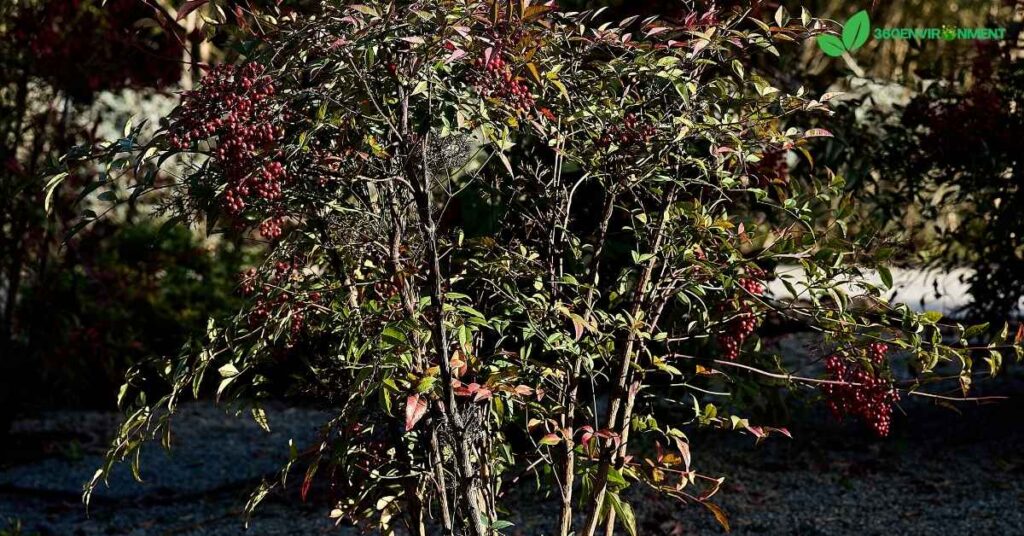
4.1. Wildlife Food Source
Wintergreen berries provide a food source for various species of wildlife in Alaska.
- Birds and Mammals: Many bird species, such as thrushes and grouse, feed on wintergreen berries during the fall and winter months when other food sources are scarce. Small mammals, including squirrels and chipmunks, also consume the berries, contributing to seed dispersal.
- Pollinators: The flowers of wintergreen attract bees, butterflies, and other pollinators, contributing to the plant’s reproductive success. Pollinators play a crucial role in maintaining the health of ecosystems, and wintergreen provides an important food source during its blooming season.
4.2. Soil and Forest Health
Besides answering the question of “Is the wintergreen found in Alaska edible” let us talk about the Wintergreen plant’s contribution to the overall health of forest ecosystems by stabilizing soil and enhancing biodiversity.
- Ground Cover: As a low-growing, spreading plant, wintergreen helps prevent soil erosion by stabilizing the forest floor. Its dense mat of leaves and roots helps protect the soil from being washed away during heavy rains or snowmelt.
- Biodiversity Support: Wintergreen plants coexist with a variety of other plant species, including mosses, ferns, and larger trees. This diverse plant community supports a healthy ecosystem by providing habitat and food for various species.
5. Traditional and Modern Uses of Wintergreen in Alaska
Wintergreen has been used by Indigenous peoples and settlers in Alaska for centuries, both as a food source and a medicinal plant. Its versatility has ensured its continued use in modern times, particularly for those interested in foraging and natural remedies.
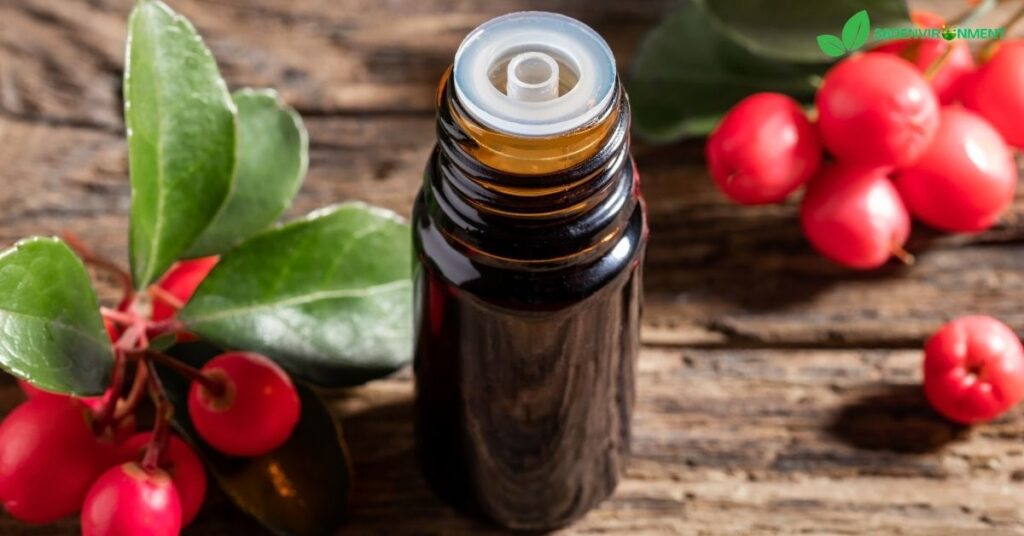
5.1. Indigenous Knowledge and Uses
Alaska’s Indigenous peoples have long understood the value of wintergreen, incorporating it into their diet and medicine.
- Cultural Significance: For many Indigenous cultures, wintergreen holds a deep cultural significance and has been used in traditional rituals and ceremonies. It has been utilized for its medicinal properties and as a flavoring in various preparations, reflecting a rich tradition of using native plants for survival and well-being.
- Medicinal Applications: Indigenous peoples have long relied on wintergreen for its analgesic properties, preparing teas or poultices from the leaves to alleviate pain from headaches, joint issues, and muscle soreness. The plant was also used to treat cold symptoms and as an anti-inflammatory remedy. This knowledge, passed down through generations, underscores the importance of understanding the natural environment and its resources.
5.2. Modern Culinary Uses
In contemporary times, wintergreen has found its way into various culinary applications, appreciated for its unique flavor profile and refreshing minty taste.
- Flavoring Agent: Wintergreen leaves and berries are often used to flavor teas, desserts, syrups, and sauces. In Alaska, foragers and culinary enthusiasts enjoy incorporating wintergreen into recipes such as berry jams, sauces for wild game, and teas, where its refreshing taste adds a natural minty twist to traditional dishes.
- Natural Remedies: Beyond its use in the kitchen, wintergreen continues to be employed in modern herbal medicine. Herbalists often recommend wintergreen teas and tinctures for their soothing properties. Its essential oil, though powerful and requiring careful use, is also valued for its aromatic and therapeutic benefits, especially in treating muscle pain.
5.3. Commercial Uses
Wintergreen has also been cultivated for its essential oils and other commercial uses, which have contributed to its global popularity.
- Essential Oil Production: Wintergreen oil, derived from the leaves, is highly prized in aromatherapy and the wellness industry for its invigorating fragrance and pain-relieving properties. It is commonly found in topical pain relief products, liniments, and muscle balms, where its methyl salicylate content offers relief from inflammation and soreness.
- Cosmetics and Personal Care: Wintergreen oil is also used in perfumes, lotions, and oral hygiene products such as toothpaste and mouthwash due to its fresh, minty scent. These products highlight wintergreen’s dual function as both a therapeutic agent and a flavor enhancer.
6. Environmental Considerations
Wintergreen’s role in ecosystems and its wide range of uses make it a valuable resource, but it is essential to harvest it responsibly and sustainably to protect wild populations and their habitats.
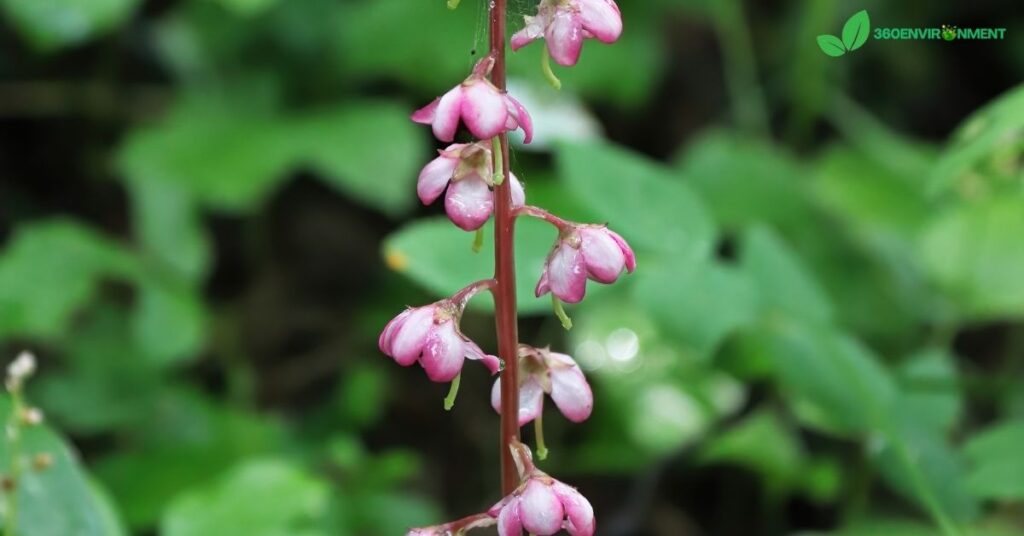
6.1. Sustainable Harvesting
Foraging for wintergreen, especially in the wild landscapes of Alaska, should always be done with sustainability in mind to ensure that natural populations are preserved for future generations.
- Foraging Best Practices: When foraging, only take a small portion of wintergreen leaves or berries from any given plant, leaving the rest for the plant to thrive and for wildlife to feed on. Overharvesting can damage wintergreen populations and disrupt the surrounding ecosystem, as these plants play a critical role in soil stabilization and biodiversity.
- Local Regulations: It’s important to be aware of foraging regulations, especially in protected areas or national parks in Alaska, where some species of wintergreen may be protected. Check local laws and guidelines to ensure sustainable and legal harvesting practices.
6.2. Habitat Protection
Protecting the natural habitats where wintergreen grows is essential for maintaining healthy populations and supporting overall biodiversity in Alaskan ecosystems.
- Forest Conservation: The moist, shaded forests where wintergreen thrives are critical for the plant’s survival. Preserving these habitats ensures that wintergreen and other native plant species can continue to flourish. Forest conservation efforts in Alaska also benefit the wildlife and human communities that depend on these ecosystems.
- Managing Invasive Species: Invasive species can pose a significant threat to native wintergreen populations by competing for resources and altering habitat dynamics. Efforts to manage and control invasive plants in Alaska are essential for protecting wintergreen habitats and maintaining ecosystem balance.
6.3. Climate Change Adaptation
Wintergreen, like many other plant species, faces challenges from climate change. Rising temperatures and changing precipitation patterns can impact its growth and distribution in Alaska’s ecosystems.
- Monitoring Population Changes: Research and monitoring efforts can help track how wintergreen populations respond to climate change. This data is valuable for conservation planning and ensuring that wintergreen and other native plants can adapt to changing environmental conditions.
- Habitat Restoration: Habitat restoration projects, such as reforesting areas with native vegetation and protecting wetlands, can improve the resilience of wintergreen populations. These efforts support not only wintergreen but also the broader ecosystems that rely on healthy, biodiverse habitats.
7. Conclusion: The Importance of Wintergreen in Alaska
So, is the wintergreen found in Alaska edible? The answer is a resounding yes. Both the berries and leaves of Alaska’s wintergreen species are not only edible but offer a range of nutritional and medicinal benefits. From providing antioxidants and vitamins to relieving pain and inflammation, wintergreen is a versatile plant with a rich history of use by Indigenous peoples and modern foragers alike.
Wintergreen also plays a crucial role in Alaska’s ecosystems, supporting wildlife, enhancing biodiversity, and contributing to soil health. Its fragrant leaves and berries are a food source for birds, mammals, and pollinators, making it an integral part of the natural environment.
However, as we celebrate the many uses and benefits of wintergreen, it is essential to practice sustainable foraging and habitat conservation to ensure that wild populations remain healthy and that the delicate balance of Alaska’s ecosystems is maintained. By respecting the environment and understanding the significance of plants like wintergreen, we can contribute to the preservation of these valuable resources for future generations.
Wintergreen, with its refreshing flavor and medicinal properties, is a symbol of nature’s generosity, offering both practical uses and ecological benefits. As we continue to explore and appreciate the natural world, let us remember to protect and conserve the habitats that sustain it, ensuring that wintergreen and other native species continue to thrive in Alaska’s wilderness.
Read More: Butte Valley National: An Exploration of Ecological Significance and Conservation Efforts

